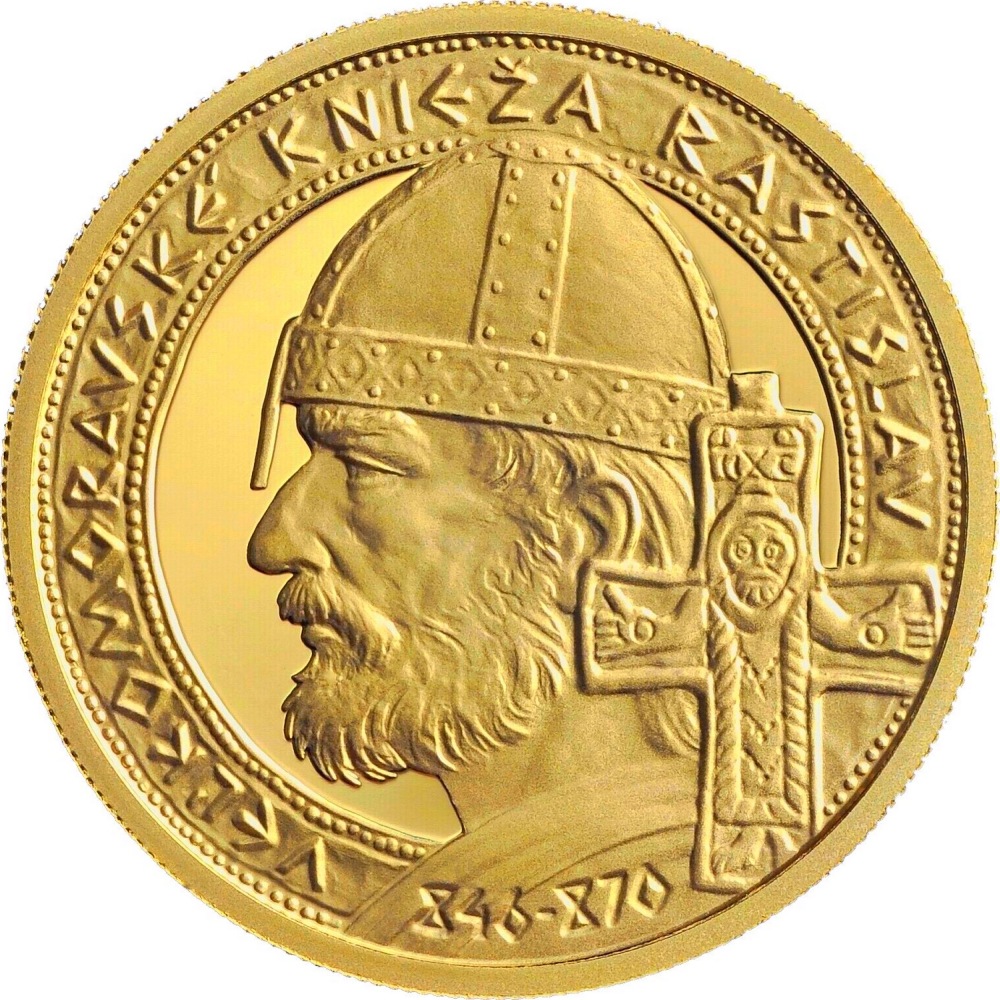
Наш народ отверг язычество и содержит закон христианский. Только нет у нас такого учителя, который бы веру Христову объяснил нам на родном языке. Другие страны (славянские), увидя это, пожелают идти за нами. В виду этого, владыко, пошли к нам такового епископа и учителя, ведь от вас во все страны добрый закон исходит.
Моравский князь Ростислав. Послание Патриарху Византии. 862 год
Средневековье славяне пользовались двумя азбуками — глаголицей и кириллицей. Это не графические варианты одного письма, а именно две азбуки, в чём-то содержательно и структурно сходные, но различные. Филологи издавна ведут споры об их генетической связи.
Относительно происхождения и прототипа глаголицы единого мнения нет. Очевидно только, что это нарочито изобретённая, системно продуманная азбука, на начальных этапах своей истории больше связанная с западнославянской письменностью, до XX в. употреблявшаяся далматинскими хорватами-католиками. Кириллица же, безспорно, восходит к греческому алфавиту и возникла как продукт его приспособления к славянской фонетике, дополнение необходимых буквенных знаков. В течение нескольких веков она служила Церкви и культуре православного славянского мира. Одну из этих азбук точно создал св. Кирилл, и затем она была усовершенствована в среде его ближайших последователей.
Достоинство и превосходство полученной от него славянами системы письма признаётся всеми учёными XIX–XXI в. — каждая буква соответствует передаче определённого звука древней славянской речи. Св. Кирилл создал славянскую азбуку в Константинополе по просьбе византийского императора Михаила III, которого моравский князь Ростислав просил прислать к нему учителя. Однако есть основания думать, что автор Жития св. Кирилла сконцентрировал своё внимание лишь на итоговом результате предшествующей подготовительной работы.
Изначальное предназначение азбуки св. Кирилла сопряжено было с идеей самостоятельности приобщившихся к христианству славян по отношению к соседним христианским народам и вместе с тем явилось средством крушения довлевшей тогда в Церкви идеологии сохранения Священного Писания и богослужения только на трёх языках: еврейском, греческом и латинском.
Первые опыты переноса христианского знания на славянскую почву были произведены учёным-греком также ещё в Константинополе. Первым переведённым на славянский язык библейским текстом стало Евангелие от Иоанна. Надо полагать, далее он и его старший брат св. Мефодий с помощниками перевели другие книги Нового Завета, которые использовались для чтения за богослужением.
Исследователи, опираясь на данные жизнеописаний святых просветителей, полагают, что в течение последовавшего затем более чем трёхлетнего пребывания братьев и их спутников в Моравии были переведены и другие тексты богослужения: Паремийник, Псалтирь, Деяния и Послания Апостолов, последования суточного цикла и некоторые праздничные службы — «весь церковный чин». К этому же периоду относится и появление первых написанных св. Кириллом на славянском языке сочинений — посвящённого христианской догматике «Написания о правой вере» и стихотворного предисловия к Евангелию.
Второй период славянского просвещения начался после смерти святого Кирилла (14 февраля 869 г. по ст. ст.) и его погребения в Риме и был связан уже исключительно с деятельностью его брата. Будучи рукоположен в 870 г. папой Адрианом II во епископа Паннонского с правом окормления и моравской паствы, свт. Мефодий начал в славянских землях весьма масштабную литературную работу. За 15 лет своего архипастырства он вместе со своими учениками сумел перевести почти все канонические ветхозаветные книги.
Меньше известно о первых этапах продолжения просветительской миссии святых Кирилла и Мефодия в Сербии, Словении, Хорватии, Далмации. Сохранились лишь отрывочные и косвенные сведения об этом. В целом здесь процесс славянизации христианской культуры сопряжён был с борьбой против католической экспансии, и, судя по позднейшей судьбе здешней письменности и книжности, национальные тенденции оказались сильнее латинского влияния. В Польше славянские богослужение и книжность сохранялись благодаря поддержке святого Войцеха, епископа Пражского, примерно до конца X в., но затем были вытеснены латинской церковной традицией. Аналогичным образом дело шло и в Чехии. Но здесь славянской письменности удалось удержаться до рубежа XI–XII вв. Об этом свидетельствуют такие памятники, как Киевские листки (X в.) и Пражские отрывки (конец XI или XII в.), Житие святого князя Вацлава (Вячеслава), а также богослужебный обиход Сазавского бенедиктинского монастыря.
Уникальный опыт славянизации христианской литературы, начатый учёными-греками святыми Кириллом и Мефодием и продолженный их славянскими последователями, значим своим безпримерным итогом. Был создан третий в Европе наряду с греческим и латынью язык богослужения и письменности. Славяне получили возможность небывало расширить сферу применения своей родной речи, значительно опередив все народы средневековой Европы. Святые первоучители и их ученики в ходе своей переводческой работы стремились приспособить общую тогда для всех славян речь к передаче различных в идейном, образном, формальном отношениях текстов. Созданный новый язык — старославянский или церковнославянский — стал и языком литературным, способным выражать конкретные и отвлечённые понятия, высокие и низменные чувства, адекватно передавать не только практический, но и духовно-интеллектуальный опыт человека, живую речь.

